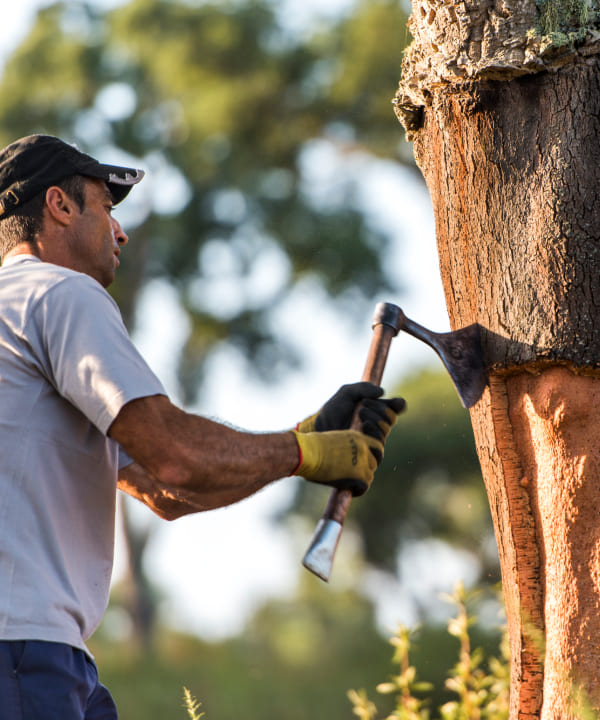WHAT IS IT?
Cork is a 100% natural, ecological and recyclable raw material, with excellent physical and mechanical properties, which make it a sustainable and very versatile material.
Of plant origin, it comes from the bark of the cork oak tree ‘Quercus Suber’ and its natural habitat is the southern regions of Portugal and the Mediterranean basin (Spain, Italy, France, Morocco and Algeria).
This plant tissue is formed by a cellular structure consisting of a gas similar to air and coated with suberin and lignin.
The cork oak is a tree of great longevity (150 to 200 years on average) and has an enormous capacity for regeneration. Throughout its existence, it is possible to harvest cork several times, about 16 times, at intervals of 9 years.
The first cork harvesting is only carried out after 25 years, obtaining virgin cork. After 9 years, the second harvesting is made, and the cork obtained is called secondary ‘secundeira’. The following strippings are carried out, respecting a minimum interval of 9 years. Only after the third stripping is the best cork obtained, called ‘amadia’.
The harvesting is done by specialised professionals during the summer period, when the tree is in its most active growth phase and it is easier to remove the cork without damaging the trunk. After each harvest, the bark of the cork oak regenerates, acquiring a smooth texture.

@apcor


